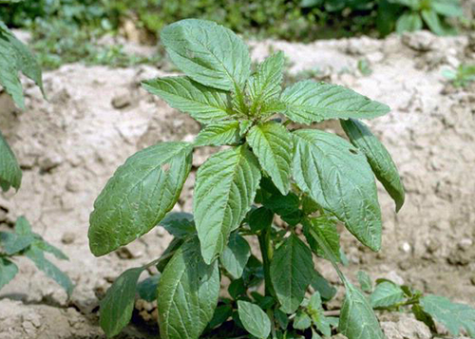Pigweeds

This weed can be a significant nuisance for gardeners, homeowners, and farmers. Many different types of pigweeds can be found in the garden; however, all of them are summer annual weeds that emerge from April through October in Kansas. All pigweeds are from the genus Amaranthus, which also has several ornamental plants. The most common pigweeds in the garden include red root pigweed, smooth pigweed, and spiny pigweed; however, there are other varieties. These weeds are native to the desert southwest of the United States and thrive in warm conditions with optimal temperatures for growth ranging from 96 to 120 degrees Fahrenheit.
Some of the most significant issues with pigweeds are that they grow far faster than our vegetables or flowers, with up to 1” of growth per day, and they are prolific seed producers, with some large plants capable of producing up to one million seeds a year. Pigweeds are commonly resistant to herbicides in part because the large number of seeds they produce leads to genetic mutations causing herbicide resistance. Luckily, unlike other weeds, the seed is only viable in the soil for a few years.
There are several ways to control pigweeds in your garden or lawn. The first is a pre-emergent herbicide used in the spring before the seeds germinate. Be sure to read the label to check if it lists pigweeds as one of the weeds it controls. In a garden setting, mulch is an excellent preventative tool as the seeds need sunlight to germinate, which the mulch blocks. If the weeds have germinated and started to come up, there are two options; the first is to remove all the weeds either by hand or using mechanical means. The final option is to use post-emergent herbicides such as glyphosphate, 2,4-D, or a product with a combination of active ingredients.

Have questions? Contact our office where our Horticulture Extension Agent will assist you with questions.
Phone: (316) 321-9660
Email: callae@ksu.edu